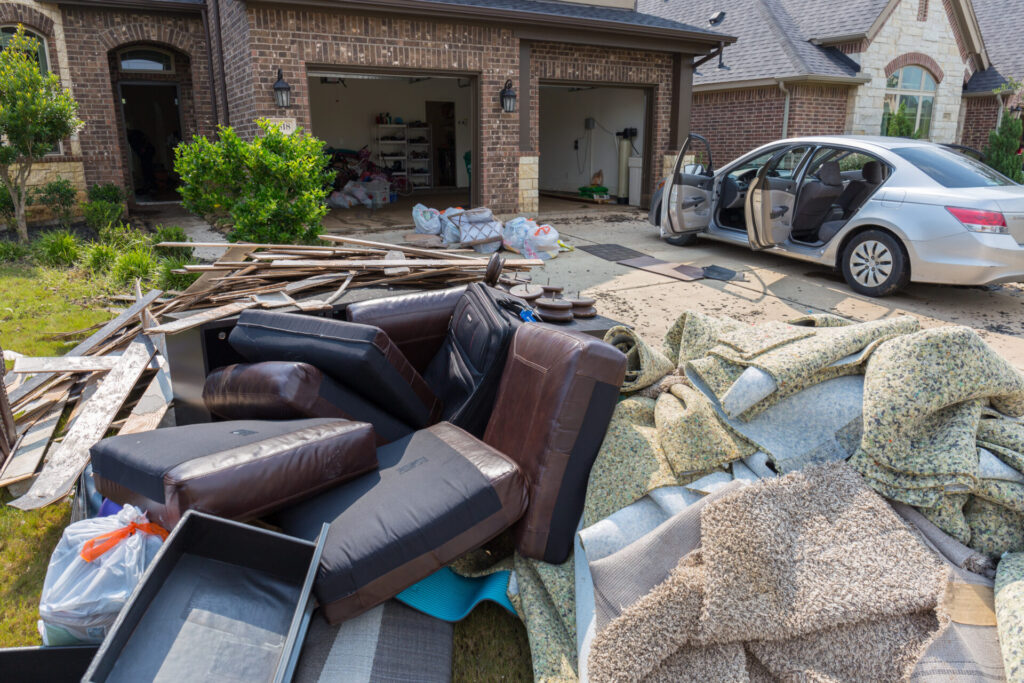If there is one type of natural disaster that will forever be associated with our home state of Pennsylvania, it’s flooding. In 1889, the catastrophic failure of the South Fork Dam on the Little Conemaugh River released almost fifteen million gallons of water into the Conemaugh Valley. The resulting flood completely obliterated the town of Mineral Point, killed a third of the population of the village of East Conemaugh, and rolled into Johnstown – just a few hours west of our base in Quakertown – as a 60-foot-tall wall of water and debris, devastating the town and leaving 2,208 people dead in its wake.
Since then, Pennsylvania has seen few floods as notorious or deadly as the Johnstown Flood, but flooding is still an unfortunate fact of life for many in the Keystone State and around the country.
One other significant change that’s happened in the hundred and thirty-odd years since Johnstown is the advent of flood insurance. Through various insurance carriers and the federal government, property owners can purchase flood insurance that will pay partial or complete compensation in the event of a flood.
In this article, we’ll look at the different types of flood insurance available to help you decide what kind of coverage you might need to protect your family against flood losses.
Do I Need Flood Insurance?
Flooding is far more common than you might think. Even if you’re miles away from the nearest FEMA-designated flood zone, there are still plenty of reasons to consider flood insurance:
- Flooding can happen anywhere. According to FEMA, 99% of all the counties in the US experienced a flood event between 1996 and 2019.
- Nearly all homeowner and commercial insurance policies don’t cover flood damage.
- Flood damage is expensive. Even one inch of water inside a home can cause more than $25,000 in damage.
- As climate change affects global temperatures and increases the frequency and severity of storms, catastrophic floods are becoming more common and affecting areas that have never been susceptible to flooding before.
If you cannot afford major repairs or complete home replacement in the event of a flood, you may want to consider flood insurance.

Where Can I Get Flood Insurance?
Flood insurance policies in the US are available from two sources: private insurance carriers and the National Flood Insurance Program (NFIP).
Private Carriers
Private-carrier flood insurance is the most flexible option, as you can set coverage levels, add riders as needed, and shop around to find the best possible premium for the coverage you need. Coverage limits for private-carrier flood insurance can be set much higher than those for federally backed NFIP policies, but you will pay more in premiums for higher coverage levels.
NFIP
Policies purchased through the National Flood Insurance Program are backed by the federal government. They are subject to strict coverage limits that may not be high enough for those with extremely valuable homes or lots of valuable possessions. In return for lower coverage limits, NFIP policies typically feature lower premiums than private coverage.
What Are the Types of Flood Coverage?
Whether you choose a private carrier or an NFIP policy, there are two types of flood policy to look at: building coverage and content coverage. Depending on your carrier, you may have to carry these two coverages as separate policies, or you may be able to get them bundled.
Both types of coverage are precisely what they sound like – building coverage pays for damages to the structure of a home or business; contents coverage pays for the loss of personal property, furniture, appliances, and other contents of the covered property.
| Building coverage covers:
· Structure of the home or business · Plumbing and electrical systems · Water heaters, furnaces, and other installed appliances like ranges and dishwashers · Permanently installed carpeting · Permanently installed furnishings like cabinets and bookcases · Window blinds · Detached garages · Fuel tanks, well equipment, and solar equipment |
Contents coverage covers:
· Personal belongings, including furniture, clothing, and electronics · Curtains · Laundry appliances · Portable/window air conditioners · Uninstalled appliances like microwave ovens · Rugs · Valuables such as jewelry, artworks, or furs |
Coverage Limits for Flood Insurance
With private-carrier flood insurance, your coverage limits will be whatever you can negotiate with your insurance company. As even a minor flood can cause substantial damage to the foundation and structure of your home, you should ideally carry a policy that will pay the home’s replacement value in the event of a total loss.
If you purchase insurance through the NFIP, your policies will be subject to coverage caps set by the federal government:
Homeowners
Homeowner policies from NFIP will pay up to $250,000 in building coverage and up to $100,000 in contents coverage.
Business Owners
Commercial flood insurance from NFIP will pay up to $500,000 for a commercial building and an additional $500,000 for the contents.
Renters
Renters can purchase contents-only flood coverage that will pay up to $100,000 for the contents of a flooded rental property.
If a Flood Has Caused Water Damage in Your Home, Contact AfterCare Restoration Right Away to Begin Mitigation and Restoration. We Work With NFIP and Private Carrier Flood Insurers: 215.515.1000
Related Articles:
- Can I Get Federal Assistance for Water Damage Restoration After a Flood?
- How to Recover Personal Items After Water Damage
AfterCare Restoration is a Local Family- and Veteran-Owned damage restoration company. We specialize in 24/7 water damage restoration, fire board-up, fire damage restoration, smoke damage restoration, and full reconstruction services.
At AfterCare, we use the latest technology, arrive in marked vehicles and professional uniforms, and stand 100% behind our work. This is why at AfterCare, we consistently receive 5 star reviews from customers who choose AfterCare for water damage cleanup and fire and smoke damage restoration.
RESIDENTIAL AND COMMERCIAL WATER & FIRE DAMAGE RESTORATION SERVICES AVAILABLE:
